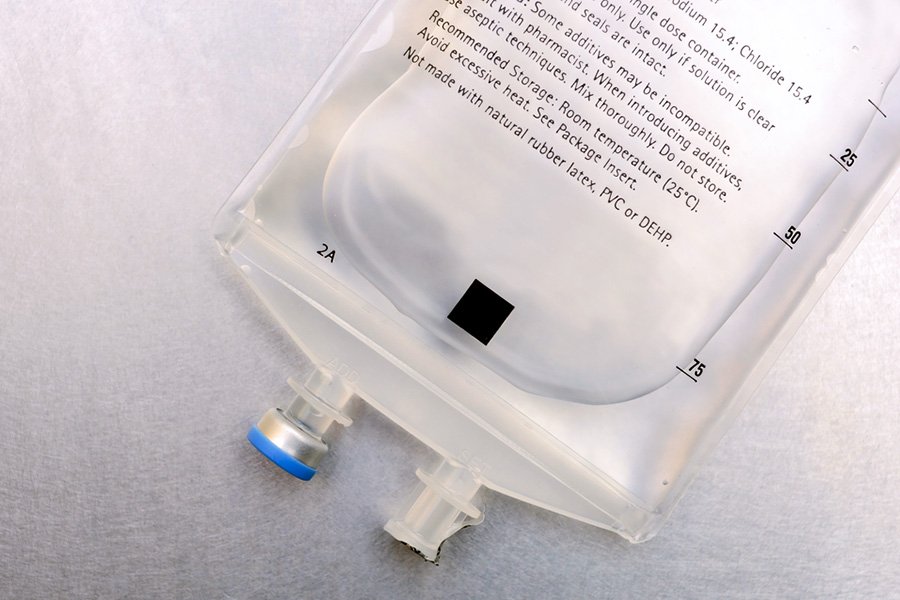With the latest advancements in technology, IV therapy has become a popular option for many patients seeking quick relief. However, those who haven’t undergone IV treatment before may be skeptical when trying it out. While some fear the application, others simply need more information before booking their first appointment. That’s why this article will focus on explaining the use and benefits of hypotonic IV fluids and why they may be the best choice for you.
By getting an insight into how this treatment works, it’ll be easier for you to decide if it’s the right option for you. Furthermore, you’ll know what conditions it’s most useful for and how it’s applied to better prepare for your first treatment. Continue reading to discover what IV fluids are hypotonic and their use!

Source: shutterstock.com / Photo Contributor: Sirbouman
What Are Hypotonic IV Fluids?
Before you dive into the use and benefits of hypotonic IV fluids, you should first understand what they are. IV therapy stands for intravenous treatment because the needed fluids and medications are applied through the intravenous route. Due to their fast-acting results achieved by skipping the digestive system, IV fluids are used to treat many different conditions.
Thus, more people than ever are interested in trying this renowned treatment out. For example, those looking for an Arizona mobile IV can choose between the various IV cocktail options that The Drip IV Infusion has to offer. Alongside a professional team by your side to guide you through the process, you’ll also get premium-quality IV ingredients held to the highest safety and regulatory standards.
When it comes down to the difference between these fluids, the three main types of IV fluids are:
Hypotonic IV fluids
Isotonic IV fluids
Hypertonic IV fluids
The main way these fluids differentiate from each other is the concentration of dissolved solutes when compared to blood. To keep it simple, isotonic fluids have a similar concentration as blood, hypotonic ones have a lower concentration and hypertonic fluids have a higher concentration.
How do hypotonic IV fluids work?
As mentioned, hypotonic IV fluids have a lower concentration of dissolved solutes than blood. Thus, they result in a decreased concentration of dissolved particles in the blood compared to the intracellular space when infused.
Due to this imbalance, the water from the intravascular compartment begins to experience osmotic movement into the intracellular space. In simple words, this type of IV therapy is designed to bring fluids into the cells from the bloodstream, making it highly useful for patients battling dehydration.
Even though this treatment has numerous potential benefits, it’s extremely important for the patient to be observed by medical professionals during it. If too much fluid moves into the cells, it might cause adverse effects that may expose the patient to risk. Therefore, a medical team must carefully monitor the patient’s status in case cerebral edema, hypovolemia, and hypotension occur.
Uses of Hypotonic IV Fluids
The primary base of hypotonic IV therapy is sodium chloride, also known as a saline solution or salt water. Even though the main use of IV therapy is hydrating the body, it may be considered a primary treatment option in numerous cases.
Depending on the patient’s condition, the medical team can choose between a variety of hypotonic IV fluids. Some of the most common options used are the following:
0.45% sodium chloride (0.45% NaCl)
5% dextrose in water (D5W)
0.33% sodium chloride (0.33% NaCl)
0.225% sodium chloride (0.225% NaCl)
0.45% NaCl
The first type of hypotonic IV fluid contains 0.45% sodium chloride. It’s one of the most common options for IV therapy due to its potential efficacy when battling intracellular dehydration.
Furthermore, it’s thought to be an effective treatment for hypernatremia, a condition characterized by abnormally high levels of sodium in the blood. Since hypernatremia is often a result of water depletion, it often involves dehydration, which can be treated with this type of IV therapy. Moreover, the 0.45% sodium chloride fluid is used for the renal excretion of solutes, which aids in the homeostasis of various ions.
While this therapy can be used to treat the mentioned conditions, it’s not recommended for patients who suffer from trauma, burns, and liver disease. The reason behind this restriction is due to the potential hypovolemia worsening, which may lead to intravascular fluid loss.
D5W
The next common hypotonic IV treatment used includes 5% dextrose in water. Even though it starts as an isotonic IV treatment, D5W turns into hypotonic as soon as the dextrose is metabolized.
Like the 0.45% NaCl fluid, this treatment helps the renal excretion of solutes by providing free water to the patient. It may also be considered an effective treatment for hypernatremia due to its hydration properties.
Unlike the 0.45% NaCl fluids, the 5% dextrose in water solution is thought to play a vital role in dextrose supplementation. Dextrose is crucial for treating hypoglycemia, which is characterized by abnormally low blood sugar levels.
0.33% NaCl
0.33% sodium chloride is the third most common hypotonic IV fluid used when treating patients. The main use of this therapy is to help patients with minor kidney problems, such as the inability to retain water. Besides helping the kidneys retain a certain volume of water, it’s also used to boost tonicity when combined with dextrose.
However, this treatment is not recommended for those struggling with heart, renal, or severe kidney failure since it may worsen their condition.
0.225% NaCl
The last hypotonic IV therapy you should know of is the one that contains 0.225% sodium chloride. This treatment is mostly used in pediatric care for children who are diagnosed with dehydration and need correction of fluid deficit. It’s often combined with 10% glucose and 500meq of potassium chloride.
Furthermore, this treatment is thought to be beneficial for treating patients with hypernatremia, but further studies are needed to determine its efficacy and risks.

Source: shutterstock.com / Photo Contributor: AlteredR
Administration of Hypotonic IV Fluids
As mentioned, IV therapy is administered intravenously to achieve fast results by skipping the digestive system. However, before you begin this treatment, you should always consult a healthcare professional to determine if it’s the right option.
Once the medical team has examined you and determined which type of IV treatment you need, the next step is to disinfect the area where the IV will be inserted. Even though the IV needle is most commonly administered in the arm, it can also be applied in other body areas.
After the nurse has located a suitable vein, they will insert the IV catheter into it. While this is the scariest part for most people, you’ll only feel a little sting during the process. Then, the IV lines are connected to the IV bag containing the predetermined fluids.
Once the medical staff adjusts the drip flow rate, all you need to do is sit back, relax, and wait for the IV bag to finish. Since many IV treatments take up to an hour, the medical personnel are required to frequently check on you and monitor your condition.
Conclusion
After discovering the use and benefits of hypotonic IV fluids, it’s up to you to decide if they’re what you need. Remember that this medical treatment requires a professional healthcare team to administer it and observe your condition during the process. Thus, always consult a medical professional before taking IV fluids to ensure your safety and prevent potential risks.




